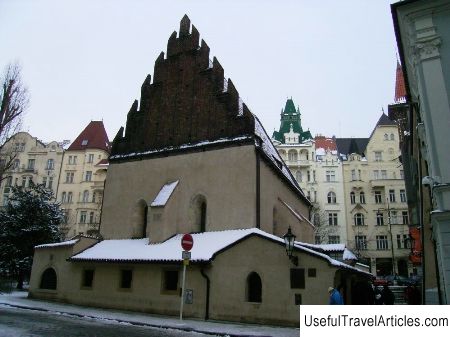Prague ghetto description and photos - Czech Republic: Prague
Rating: 7,9/10 (244 votes) 
Prague ghetto description and photos - Czech Republic: Prague. Detailed information about the attraction. Description, photos and a map showing the nearest significant objects. Photo and descriptionJews have lived in Prague since the 9th-10th centuries. Later, many Jews were forcibly converted to Christianity, and in Prague a wall was built around the Jewish quarter, thereby forming the so-called Jewish ghetto, outside of which Jews had no right to settle. There were several synagogues, a cemetery and schools here. After the revolution of 1848, Jews received full civil rights and were able to move to other areas of the city. As a result, by the end of the 19th century, only 20% of the ghetto population were Jews; the quarter was inhabited by beggars, homeless people, representatives of the Prague bottom. The quarter became a breeding ground for epidemics and dirt, so in 1893 Emperor Franz Joseph I ordered to demolish old Jewish houses and build shops, offices, tenement houses on this place. Almost all ancient monuments were destroyed, only a few synagogues and a cemetery have survived. The Nazis declared the historic Jewish buildings of Prague as a Museum of an exterminated ethnic group and collected items of Jewish worship and documents from all over the country. This is how the modern Jewish Museum, one of the largest ethnographic Jewish collections in Europe, appeared. The Spanish synagogue is the most luxurious one, decorated with stucco, gilding and colored stained-glass windows. Most of the exhibits on display here tell about the Holocaust and concentration camps. The Pinkas Synagogue became a monument to Jews - victims of Nazism. On its walls are written the names of more than 75 thousand Czech Jews who died in concentration camps. A passage through its courtyard leads to the Old Jewish Cemetery, founded at the beginning of the 15th century. More than 200 thousand people are buried here. The Old New Synagogue is the oldest synagogue in Europe. It has always remained the main temple of the Jewish community and functions in this capacity to this day. The brick pediment of the building was built in the 15th century, and a stone safe from the 13th century has been preserved in the lobby. The Jewish Town Hall, the only one outside Israel, has also been preserved. Pay attention to the town hall clock: in addition to the usual dial, there is also a `` Jewish '' one, the hands of which move in the opposite direction.      We also recommend reading Shakespeares Birthplace description and photos - Great Britain: Stratford-upon-Avon Topic: Prague ghetto description and photos - Czech Republic: Prague. |




